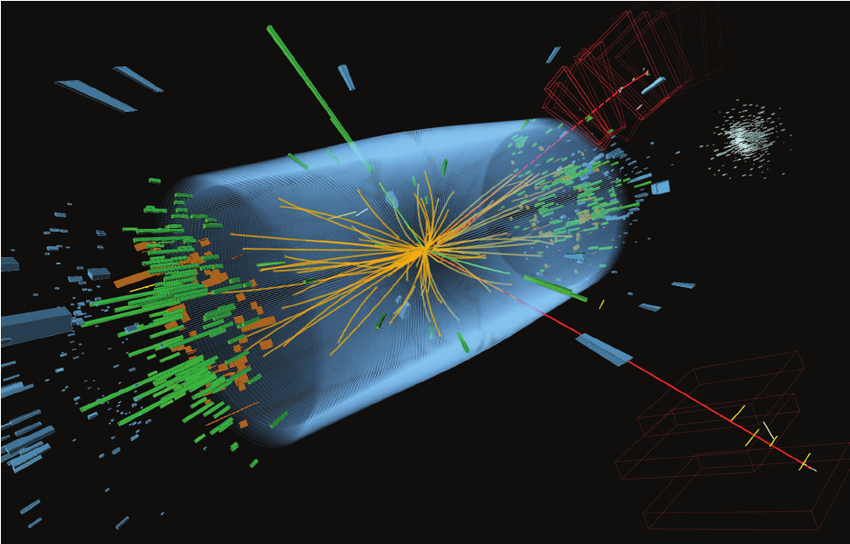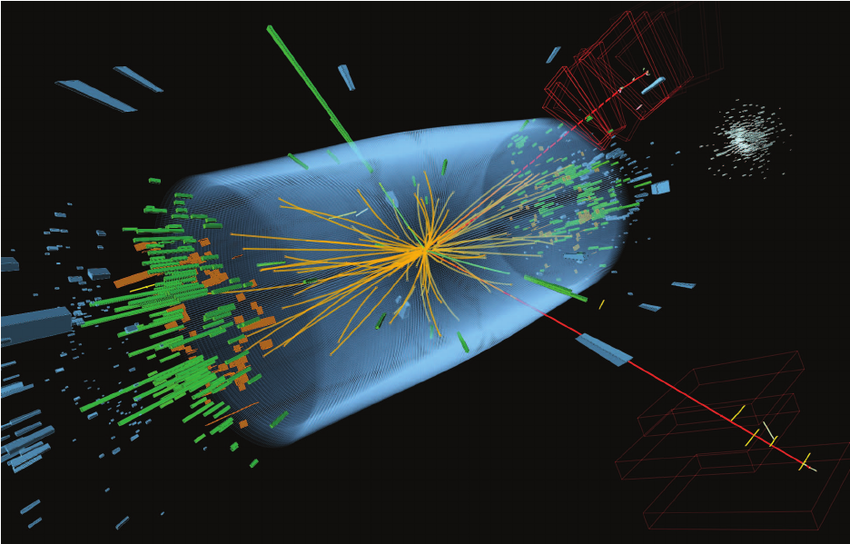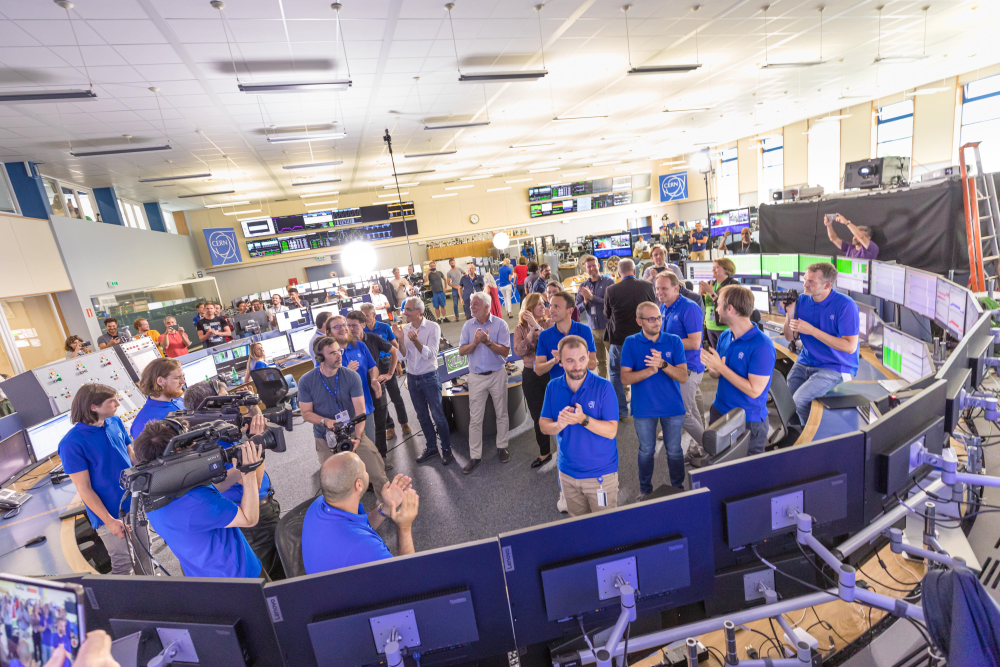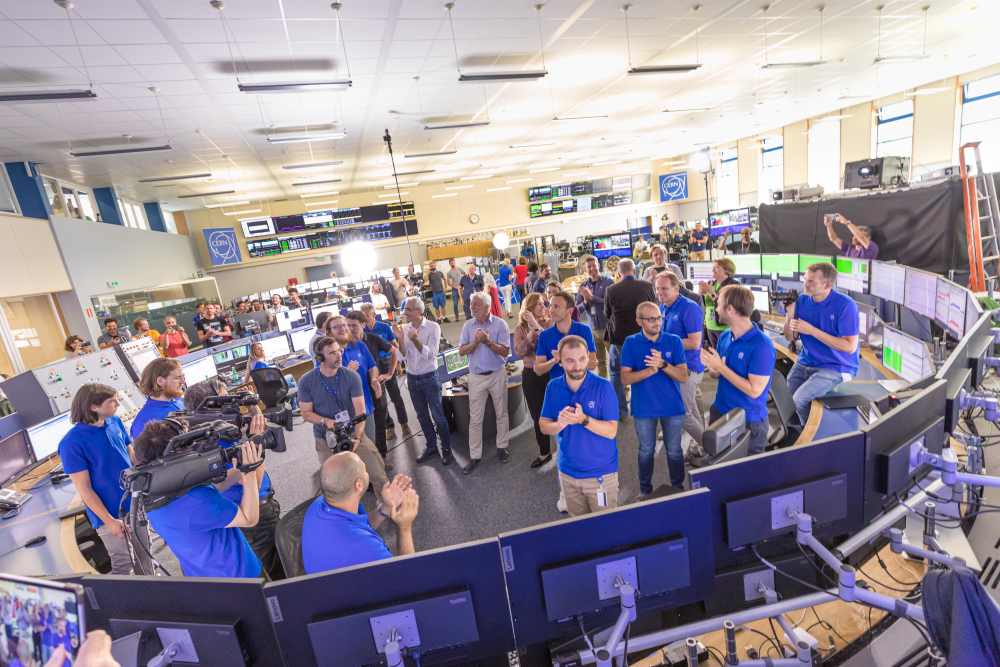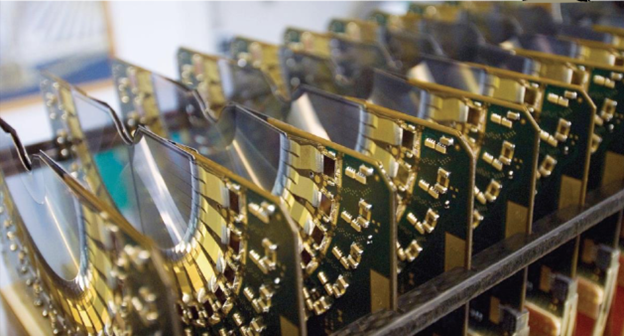Good Omens for Run 3
At CERN, these are times for both celebrations and new beginnings. On July 4th, researchers gathered for the Higgs 10th-anniversary symposium, held in the same auditorium where the Higgs boson discovery was announced in 2012. On the same day, the two collaborations that codiscovered the Higgs—ATLAS and CMS—published their latest data analyses, sketching the most accurate “portrait” yet of the Higgs boson. And on July 5th, the Large Hadron Collider (LHC) announced the successful start of its third run, with detectors recording particle collisions at the record energy of 13.6 TeV. In a recorded video, Peter Higgs sent his wishes to the researchers: “Once again, enjoy yourself.”
Syncing the large symposium and other celebratory events with the Run 3 kickoff gave researchers a chance to reflect on how far they have come before they embark on new work, says Marumi Kado, deputy spokesperson of the ATLAS experiment. After the highs of the Higgs discovery, “we all experienced some sort of postdiscovery blues,” but in truth a lot happened in the last decade, he says. Spending a whole day to meet and take stock of the progress so far, “filled all of us with energy and optimism,” says Kado (see News Feature: The Era of Higgs Physics).
The Higgs portrait—independently obtained by the ATLAS and CMS collaborations—is a testament to this progress and allows the researchers to anticipate what they may get from Run 3. These new results are based on the full dataset from Run 2—which created over 8 million Higgs bosons from 10,000 trillion proton-proton collisions. Both collaborations analyzed a wide array of Higgs events to obtain the most precise measurements to date of how the Higgs interacts with other particles and with force carriers.
This portrait contains no shocking surprises—the observed features of the Higgs boson are those predicted by the standard model of particle physics. But, compared with previous releases, the measurement uncertainty was significantly reduced to values between 5 and 10%, already placing constraints on some alternative theories. “We are truly entering the era of precision Higgs physics and the next run will give us unprecedented ability to test the standard model,” says CMS spokesperson Luca Malgeri.
Over the next four years, LHC’s third run is projected to more than double the data available for analysis, producing some 18 million Higgs bosons for each of the experiments. In addition, the ATLAS and CMS collaborations have both improved their data acquisition with better “trigger” systems that pick out worthwhile collision events and better characterization techniques for identifying particles, such as electrons and muons, emerging from Higgs decays.
With the bounty of Run 3, researchers will move on to measure with greater precision processes that have already been observed, but they will also target rare processes for which Run 2 was only able to provide constraints. Examples of the latter include the decay of a Higgs boson into “second generation” particles, such as muons or charm quarks, or the simultaneous production of a pair of Higgs bosons. Another promising goal is measuring the Higgs lifetime, which may reveal the presence of hidden particles that couple to the Higgs but aren’t included in the standard model, says Kado.
Measuring Higgs-pair (or di-Higgs) production could allow researchers to study how the Higgs interacts with itself, which is related to a phase transition that is thought to have occurred in the early Universe and that could explain the dominance of matter over antimatter. Di-Higgs production, however, won’t likely be measurable in Run 3 but should become accessible in the next upgrade, the High-Luminosity LHC (HL LHC), says Kado. Scheduled to start in 2029, HL LHC will produce 10 times more Higgs bosons than Run 3.
Run 3 improvements are not just for ATLAS and CMS. The larger data sample will also be a boon to a third LHC experiment, the LHC “beauty” (LHCb) detector, which in 2021 delivered a tantalizing result. The analysis by the LHCb team of Run 2 data hinted at small differences in decays of particles containing beauty quarks depending on whether the decays involve electrons or muons, which are two types of leptons. This observed difference in decays would contradict the “lepton flavor universality” of the standard model. “With the data sample that we are going to get from Run 3, we really should be able to confirm these hints and potentially turn them into a discovery,” says Chris Parkes, LHCb spokesperson.
The 5% boost in collision energy (from 13 TeV in Run 2 to 13.6 TeV in Run 3) may seem incremental, but it could have an important impact on the probability of creating never-before-seen heavy particles. CERN physicists, however, say that there’s too much of an obsession with particle hunting. “If you had met Darwin coming back from Galapagos, would you have asked him how many new birds did he see?” said Gian Giudice, who leads CERN’s theoretical physics department, during a press briefing. A better question for Darwin, according to Giudice, would be to ask what he learned about biological evolution. Giudice drew a parallel to the LHC mission: “We are making this exploration not to count the number of ‘birds’ but to understand something fundamental about the evolution of our Universe.”
–Matteo Rini
Matteo Rini is the Editor of Physics Magazine.



